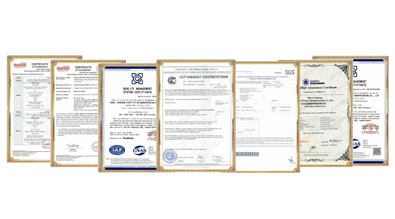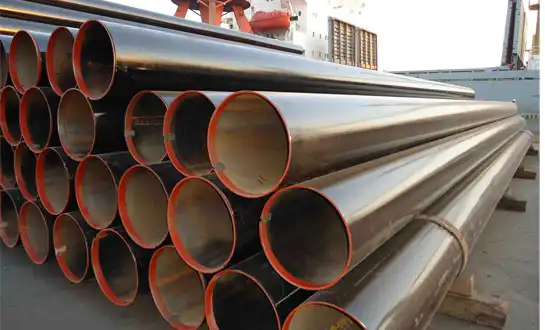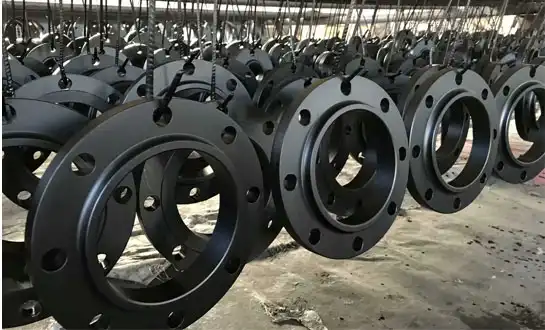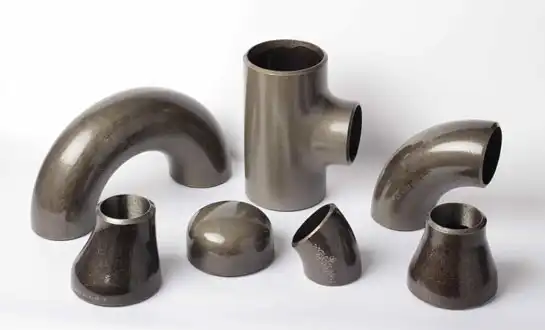Understanding Mild Steel Flanges: Types and Applications
Mild steel flanges serve as fundamental components in piping systems across numerous industries, offering reliable connections between pipes, valves, and equipment. These carbon steel flanges, known for their excellent weldability and cost-effectiveness, are widely used in water distribution, oil and gas, and general industrial applications. With varying types designed for specific pressure ratings and connection requirements, mild steel flanges provide versatile solutions for both low and high-pressure systems. This comprehensive guide explores the different types of steel flanges, their material properties, and their diverse applications in modern piping infrastructure.

Common Types of Mild Steel Flanges
The construction industry utilizes several standard mild steel flange designs, each offering unique advantages for specific piping requirements.
Weld Neck Flanges for High-Pressure Systems
Weld neck steel flanges feature a long tapered hub that provides reinforcement in high-stress applications, making them ideal for extreme pressure and temperature conditions. The smooth transition from flange thickness to pipe wall thickness significantly reduces stress concentration points compared to other flange types. These steel flanges are particularly valuable in oil and gas pipelines, power generation plants, and chemical processing systems where integrity under cyclic loading is critical. Their design allows for easy radiographic inspection of the weld joint, an essential requirement in regulated industries that mandate full penetration welds for safety-critical applications.
Slip-On Flanges for Cost-Effective Installation
Slip-on steel flanges offer installation advantages with their lower initial cost and simpler welding requirements compared to weld neck varieties. The flange slides over the pipe and requires fillet welding on both the inside and outside, making them popular for low-pressure applications like water distribution and HVAC systems. While not suitable for severe service conditions, their ease of alignment proves beneficial during piping modifications or expansions. Many engineers specify slip-on steel flanges for systems operating below 300 psi and at moderate temperatures where the reduced material cost provides significant savings without compromising safety in static applications.
Blind Flanges for System Isolation
Blind steel flanges serve as removable closures in piping systems, allowing for future expansion, maintenance access, or pressure testing. These solid discs without a center hole can withstand full system pressure when properly bolted, making them essential components during hydrotesting and system commissioning. In process plants, they safely isolate equipment for maintenance while maintaining the integrity of the overall system. Special variants include spectacle blinds (combination of blind and spacer) for permanent installation in systems requiring periodic isolation, demonstrating the versatility of these critical steel flange components in industrial piping networks.
Material Specifications and Properties
Mild steel flanges are manufactured according to strict international standards to ensure quality and performance consistency.
ASTM A105 Standard Specification
ASTM A105 is the most common specification for carbon steel flanges intended for ambient and higher-temperature service in pressure systems. These steel flanges contain a maximum of 0.35% carbon content, providing an optimal balance between strength and weldability. The standard requires impact testing only when specified by the purchaser for low-temperature applications. A105 steel flanges demonstrate excellent mechanical properties with typical tensile strength ranging from 485-655 MPa and yield strength of 250 MPa minimum, making them suitable for various industrial applications up to 425°C service temperature.
Forged vs. Plate Material Construction
Steel flanges are typically manufactured through either forging or plate cutting processes, each offering distinct advantages. Forged steel flanges provide superior grain structure and mechanical properties due to the controlled deformation during the forging process, making them ideal for high-pressure applications. Plate-cut steel flanges offer cost advantages for larger diameters and lower pressure ratings. Modern manufacturing techniques ensure both types meet stringent dimensional tolerances, with forged variants generally preferred for critical services where reliability is paramount and plate versions often specified for general industrial use where cost considerations dominate.
Corrosion Protection Methods
While mild steel flanges offer excellent mechanical properties, they require proper corrosion protection for long-term performance in aggressive environments. Common protection methods include hot-dip galvanizing, which applies a zinc coating that sacrificially protects the base metal, and various paint systems designed for specific chemical exposures. For internal protection, epoxy linings or rubber coatings may be applied to resist corrosive media. Recent advancements in nano-ceramic coatings provide enhanced protection with thinner applications, reducing flow restrictions while maintaining corrosion resistance in challenging operating conditions for steel flanges.
Industrial Applications and Selection Criteria
Proper selection of mild steel flanges requires careful consideration of application requirements and operating conditions.
Water and Wastewater Treatment Systems
Steel flanges play a crucial role in water distribution and treatment infrastructure, particularly in large-diameter transmission mains and pumping stations. Ductile iron flanges (often cement-lined) handle potable water systems, while rubber-gasket joints with grooved steel flanges simplify installation in treatment plants. For seawater desalination plants, specially coated mild steel flanges provide cost-effective solutions when properly protected against chloride-induced corrosion. Engineers frequently specify restrained joint steel flanges in seismic zones where maintaining pipeline integrity during ground movement is essential for public safety and system reliability.
Oil and Gas Pipeline Networks
The energy sector extensively utilizes steel flanges in both upstream and downstream operations. ANSI B16.5 Class 150 to 2500 weld neck flanges dominate high-pressure transmission lines, while compact flange designs with enhanced corrosion protection combat harsh environmental conditions. Offshore platforms often specify specially coated steel flanges to withstand saltwater exposure, with cathodic protection systems providing additional defense against galvanic corrosion. Recent developments include low-temperature tested steel flanges for arctic applications where material toughness at sub-zero temperatures becomes critical for operational safety.
General Industrial and Construction Uses
Beyond specialized industries, mild steel flanges find widespread use in commercial buildings, manufacturing plants, and HVAC systems. Slip-on and threaded steel flanges simplify installation in tight spaces common in mechanical rooms, while blind flanges provide safe isolation points for equipment maintenance. The construction industry values the adaptability of steel flanges in temporary piping systems during building projects, where they can be easily disassembled and reused. Proper gasket selection and bolt torque procedures ensure leak-free performance across these diverse applications, demonstrating the versatility of mild steel flanges in industrial settings.

Conclusion
Mild steel flanges remain indispensable components in modern piping systems, offering reliable performance across diverse industrial applications. Understanding the various types, material specifications, and application considerations enables engineers to select optimal flange solutions that balance performance, cost, and longevity. From high-pressure oil pipelines to municipal water systems, proper flange selection and installation practices ensure safe and efficient operation throughout the service life of piping infrastructure.
HEBEI RAYOUNG PIPELINE: Your Trusted Mild Steel Flange Manufacturer
HEBEI RAYOUNG PIPELINE TECHNOLOGY CO., LTD specializes in manufacturing high-quality mild steel flanges that meet international standards including ANSI, ASME, and DIN specifications. Our ISO 9001:2015 certified production facility delivers reliable flange solutions for oil & gas, water treatment, and general industrial applications. With GOST-R and SGS certifications ensuring export compliance, we provide weld neck, slip-on, blind, and specialty steel flanges in various sizes and pressure ratings.
Contact our technical experts today at info@hb-steel.com to discuss your project requirements and discover how our steel flange solutions can enhance your piping system's performance and durability.
References
1. ASME B16.5 - Pipe Flanges and Flanged Fittings
2. ASTM A105/A105M - Standard Specification for Carbon Steel Forgings for Piping Applications
3. ASME B16.47 - Large Diameter Steel Flanges
4. API 6A - Specification for Wellhead and Christmas Tree Equipment
5. EN 1092-1 - Flanges and their joints
6. MSS SP-44 - Steel Pipeline Flanges

Need a quote? Want to see samples? Just say hello. We’re friendly. We’re fast. And we’re ready when you are.

Welcome to RAYOUNG – Strong Pipes, Stronger Promise




